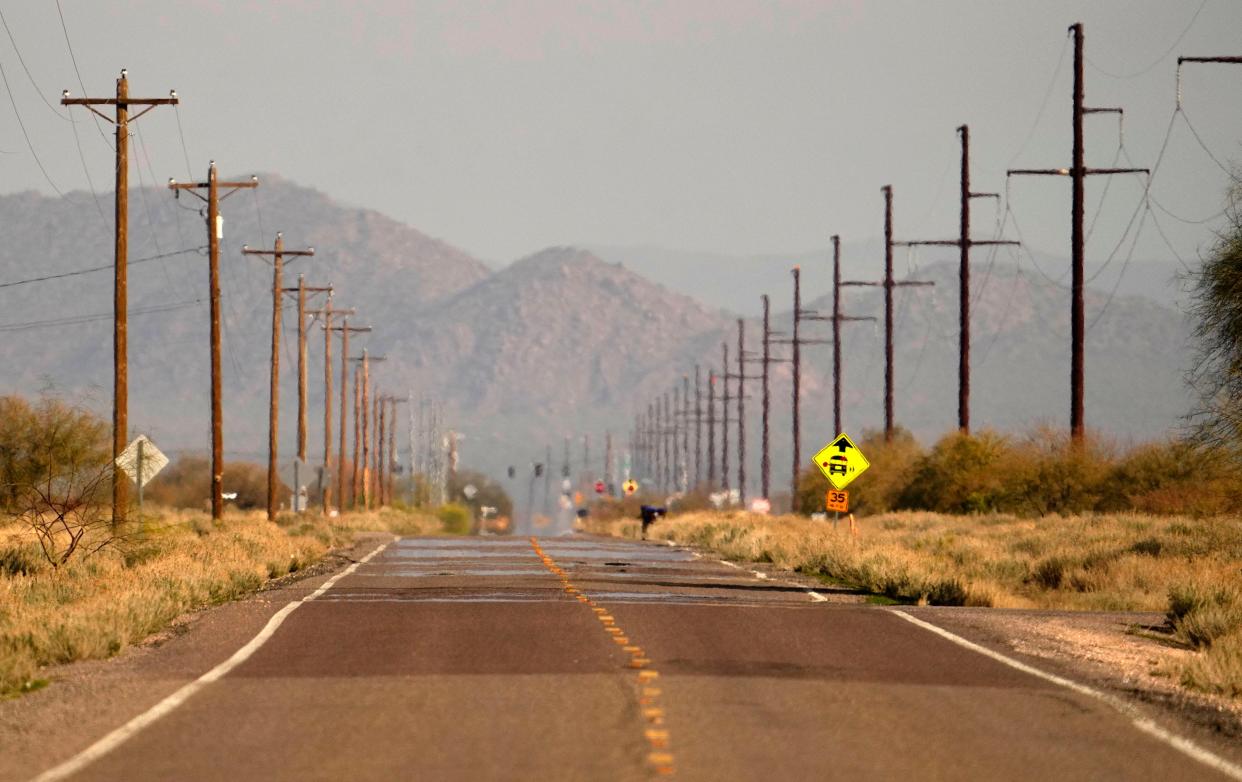Autopsies scheduled as investigation into Eloy hot air balloon crash continues

Autopsies were scheduled Wednesday for the bodies of four people who died in a hot air balloon accident in Eloy, and investigators were examining the balloon for clues about its crash.
The postmortem examinations were a crucial step in the investigation of the incident. Autopsy results could shed light on exactly what caused the balloon to crash on Sunday, killing an Arizona-based pilot and three passengers from out of state.
County officials said autopsy results, including any toxicology findings, could take six to eight weeks to receive.
Meanwhile, National Transportation Safety Board officials were working with the Federal Aviation Administration and Eloy police to investigate. The NTSB said in a statement Monday that the crash may have been linked to an "unspecified problem" with the balloon's "envelope," the large bag that fills with hot air to make the balloon rise.
Officials said they are examining the envelope for any anomalies. An electronic device with possible relevant flight information and a video camera was sent to NTSB headquarters in Washington, D.C., for further analysis.
NTSB officials said investigators have also collected maintenance records for the balloon and information on the pilot's flight experience. Interviews with witnesses and participants in the flight were continuing, according to the agency.
Balloon accidents considered 'rare'
Local officials say accidents involving hot air balloons are unusual.
Eloy Fire Chief Kelly Weddle said his paramedics occasionally respond to treat skydiving injuries. That's expected in Eloy, a place he called "one of the world’s busiest skydiving drop zones."
"We have treated injuries from twisted ankles and leg fractures to midair collisions to worse," he said.
But Weddle called hot air balloon incidents "very rare."
The Valley has previously seen hot air balloon crashes, but most end with few injuries. Most recently, a hot air balloon with nine people aboard crashed in a north Phoenix neighborhood in December. No one was injured in the crash.
The NTSB holds records of just three previous fatal incidents involving hot air balloons in Arizona.
In 2005, a hot air balloon operated by Thunderbird Adventures crashed in Marana, just north of Tucson. The balloon clipped the top of a mountain, killing one person and injuring 10.
Investigators concluded that the balloon was in good operating condition and that the crash was likely caused by "inadequate supervision" by its pilot, according to an NTSB report.
In 1996, high winds forced a balloon’s pilot to make an emergency landing in Cave Creek. The balloon dragged along the ground for more than 400 feet before flipping over, per an NTSB report. After the collision, someone accidentally pulled on the blast valve, igniting a fire. One passenger died and seven others were injured.
An investigation later found the pilot failed to turn off the balloon's pilot light burners and installed improper upright rods in the balloon's basket.
In 1990, a balloon's fuel line connection failed and started a fire. The pilot told passengers to jump from the balloon, which was flying over Phoenix, according to an NTSB report. One person died after jumping from a "relatively high altitude," per the report, and three others were injured.
Investigators determined the balloon’s fuel system improperly had four fuel tanks instead of two. That modification wasn’t approved by the FAA or the balloon’s manufacturer.
Sasha Hupka covers county government and regional issues for The Arizona Republic. Do you have a tip? Reach her at sasha.hupka@arizonarepublic.com. Follow her on X, formerly Twitter: @SashaHupka. Follow her on Instagram or Threads: @sashahupkasnaps.
Reach Republic reporter Perry Vandell at perry.vandell@gannett.com or 602-444-2474. Follow him on X, formerly known as Twitter: @PerryVandell.
This article originally appeared on Arizona Republic: Crash investigators examine Arizona hot air balloon's 'envelope'

